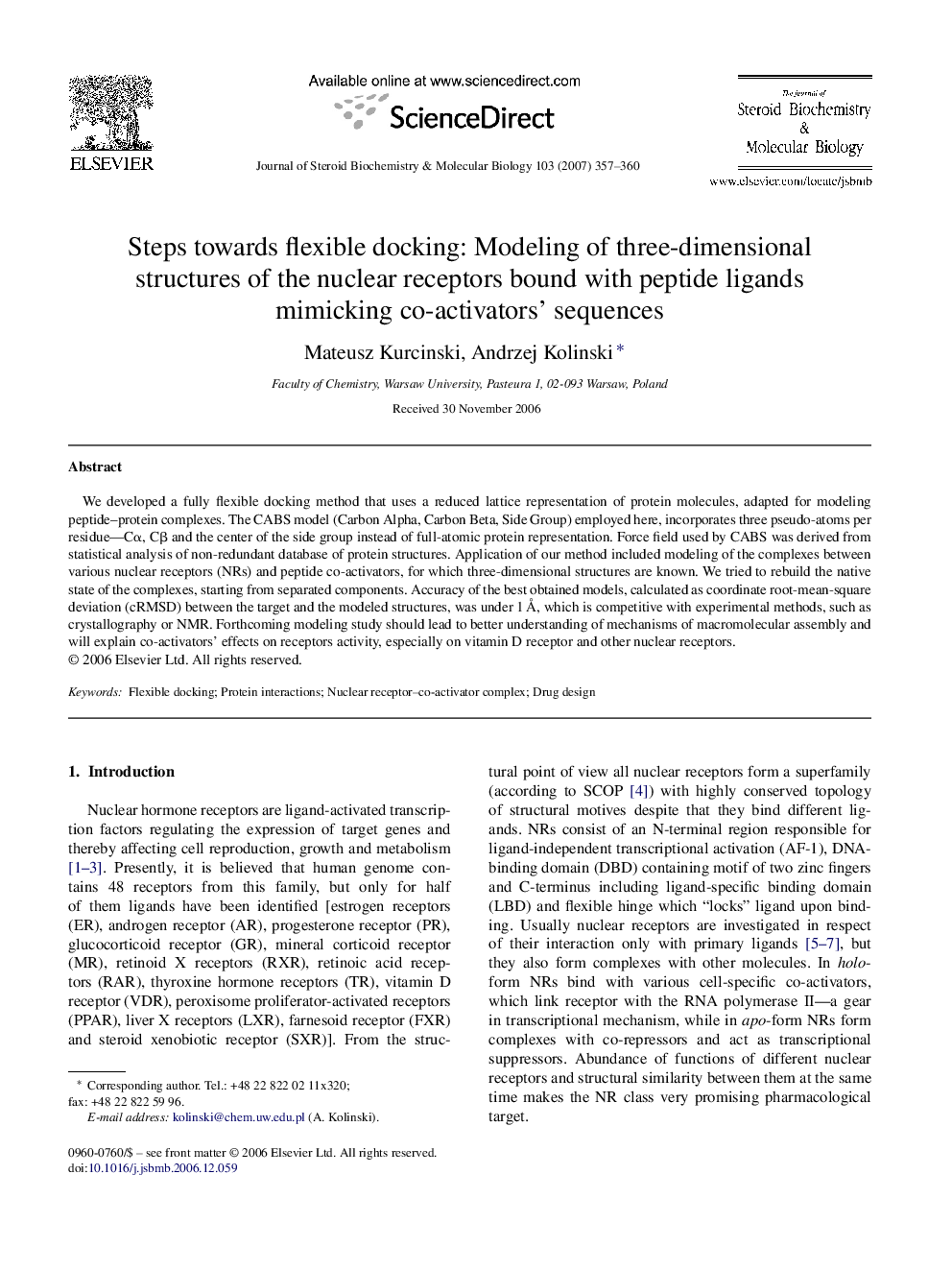| Article ID | Journal | Published Year | Pages | File Type |
|---|---|---|---|---|
| 1992544 | The Journal of Steroid Biochemistry and Molecular Biology | 2007 | 4 Pages |
Abstract
We developed a fully flexible docking method that uses a reduced lattice representation of protein molecules, adapted for modeling peptide-protein complexes. The CABS model (Carbon Alpha, Carbon Beta, Side Group) employed here, incorporates three pseudo-atoms per residue-Cα, Cβ and the center of the side group instead of full-atomic protein representation. Force field used by CABS was derived from statistical analysis of non-redundant database of protein structures. Application of our method included modeling of the complexes between various nuclear receptors (NRs) and peptide co-activators, for which three-dimensional structures are known. We tried to rebuild the native state of the complexes, starting from separated components. Accuracy of the best obtained models, calculated as coordinate root-mean-square deviation (cRMSD) between the target and the modeled structures, was under 1 Ã
, which is competitive with experimental methods, such as crystallography or NMR. Forthcoming modeling study should lead to better understanding of mechanisms of macromolecular assembly and will explain co-activators' effects on receptors activity, especially on vitamin D receptor and other nuclear receptors.
Related Topics
Life Sciences
Biochemistry, Genetics and Molecular Biology
Biochemistry
Authors
Mateusz Kurcinski, Andrzej Kolinski,
